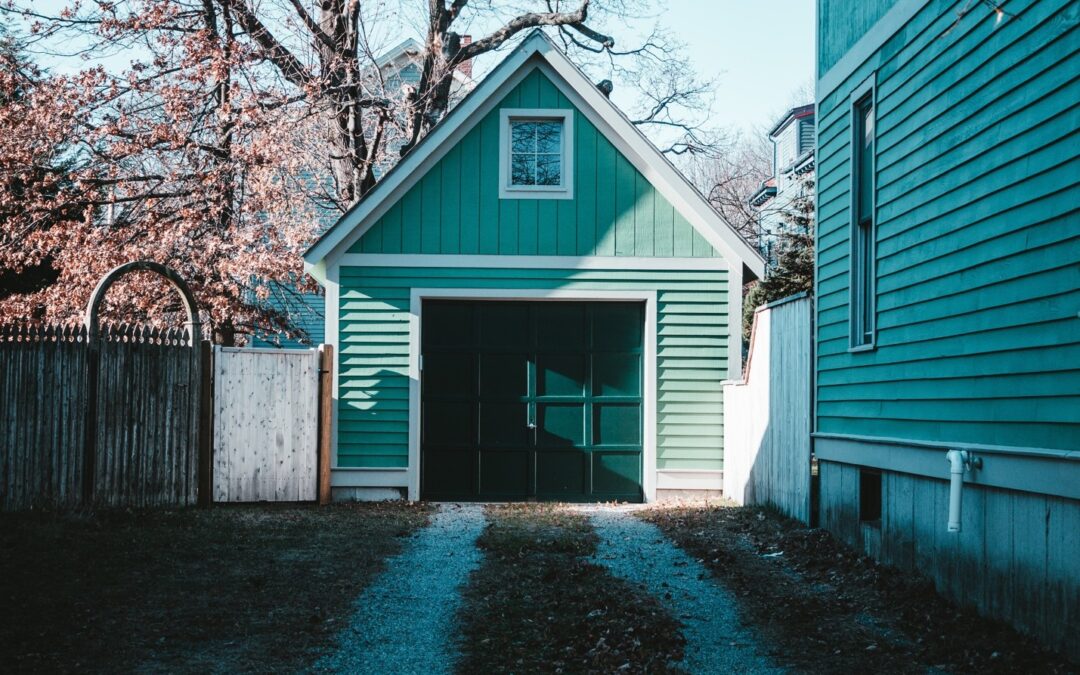The garage door is arguable the most important piece of equipment in the home. It not only keeps your stored belongings, cars, and toys safe, but it’s the first line of defense for your family’s safety! It automatically deters unwanted pests, animals, and people. It is an obvious statement, but it is undoubtedly true. Also, your garage door is the most significant piece of equipment you have in your house, and when it breaks down, it can be highly inconvenient. The following list includes the most common reasons why your garage door could stop working correctly. The good news is these garage door repairs have an easy and quick solution.
1. Dead batteries

This first reason why your garage door is broken might be obvious, but in the heat of the moment and frustration, people forget to check their batteries in the remotes or transmitters. So the first thing you should do when your garage door doesn’t open is to check your batteries! Most garage door remotes use a lithium-ion battery or a 1.5-volt alkaline battery. They need to be replaced at least every two years. Signs of a dying battery can include inconsistent operations, a stuck door, and a functional wall mount control. If the wall mount opener consistently works, you know the problem lies in the remote. It is also easy to replace your garage door remote’s batteries. First, you will need to remove the back slot of your garage door remote by sliding it open; some remotes require you to unscrew small screws before you can open it. Once the battery slot is opened, you will be able to take your old battery out and replace it with a brand new one according to the positive and negative signals.
2. Broken cables or tension springs

A sign you may have broken cables or tension springs in your garage door is if it closes way too fast. A broken cable causes extreme tension on other cables, which can cause the garage door to squeak and shake. Lift cables are found at the bottom corners of your garage door connected to torsion springs above the door. Retaining cables are found in garage doors inside extension springs. These run vertically along each side of the garage door. These cables prevent the extension springs from flying off the wall if one breaks. Both cables are very heavy-duty and twisted with strands of galvanized wire. They are strong and last for years if they are taken care of properly. However, poor track alignment, rust, corrosion, excess moisture, and faulty bearings in a pulley can contribute to their fraying or snapping. If this sounds familiar to your garage door situation, call your nearest and best garage door repair company for service immediately. If it is not repaired as soon as possible, it’s a safety hazard.
3. Poor alignment
If you hear a rubbing noise during a specific spot when your garage door opens or closes, this could mean it is off the track. It could also slow down during a particular spot, and you might be able to see gaps between the rollers and the rail. This problem can be dangerous if it is not fixed by a garage door professional right away.
4. Photo-eye sensors are dirty or out of alignment

If you don’t have an issue opening your garage door, but it won’t close when you press the button, it could be because the photo eye sensors need cleaning or are completely out of alignment. If they sense something in the way of the garage door when it’s closing, their purpose is to reverse the door so that it won’t close on anything. This is in place to potentially save the life of your child or even your pet! If these sensors are dirty, the invisible beam cannot be sent back and forth, which causes your garage door to think it should not close, as something is in the way. If they are clean and you still have the same problem, make sure they are aligned correctly at the same height and angle.
5. Something in the way

If your garage door closes but reverses every time, it could be because something is in the way of the door’s path to the ground. This could be anything from a garbage can to toys or even dirt! Regularly check for dust, dirt, and grime build-up on the track. You can wipe the track with a damp cloth to fix the problem!
6. Broken torsion spring
If your garage door is not lifting and opening at all, it could be a broken torsion spring. These springs do the heavy lifting and do wear down over time. It could be from rust, or it could just be normal wear and tear! If you hear a loud bang, you probably heard the spring break, and you should call your best garage door repair professional to replace it!
7. Is it manually locked?

If you hear the garage door opener’s motor running, but your door isn’t opening, and the above problems don’t add up, check to see if your door is manually locked. Most homes come with garage doors that have a manual lock on them. This lock is found in the middle of the door, and as simple as it sounds, unlock it before you open it.
8. Is the disconnect switch enabled?
If you hear the motor of the garage door opener running for the whole time it would take to open it, and the door does not move, the disconnect switch could be on. The purpose of the disconnect switch is to manually open or close the garage door if the power goes out. It is another essential safety feature that is included with every garage door. This switch is attached to that rope that dangles down in the middle of your garage. You can pull on the rope to turn the switch on or off.
9. Garage remote problems that is not battery related
If you find your garage door opening and closing at random, there is an obvious problem! Your garage opener transmitter could be stuck or pushed against something accidentally pressing the button. The transmitter frequency could also be mixed up with another nearby one. For example, it could be in sync with your neighbor’s opener so that every time he opens and closes his garage door, yours goes with it! It is possible to reprogram your remote if this is the case; consult your manual or call your garage door repairman!
10. Limit setting

Lastly, if your garage door closes correctly but then opens right back up, it could be from your open and close limit setting on your garage door opener. This limit is a range to tell your opener how far the door should move. If these settings are incorrect, it tells your garage door that it is not yet closed even when it hits the floor. It automatically reverses because it is hitting the ground. The range on your remote will need to be readjusted on your garage door motor, and your manual should have the settings on where it needs to be. Make sure to test it a few times and if it still doesn’t stay shut, call the nearest garage door repair professional.
These are the top most common reasons why your garage door is not working, and we hope you found a solution to your possible garage door problem.

